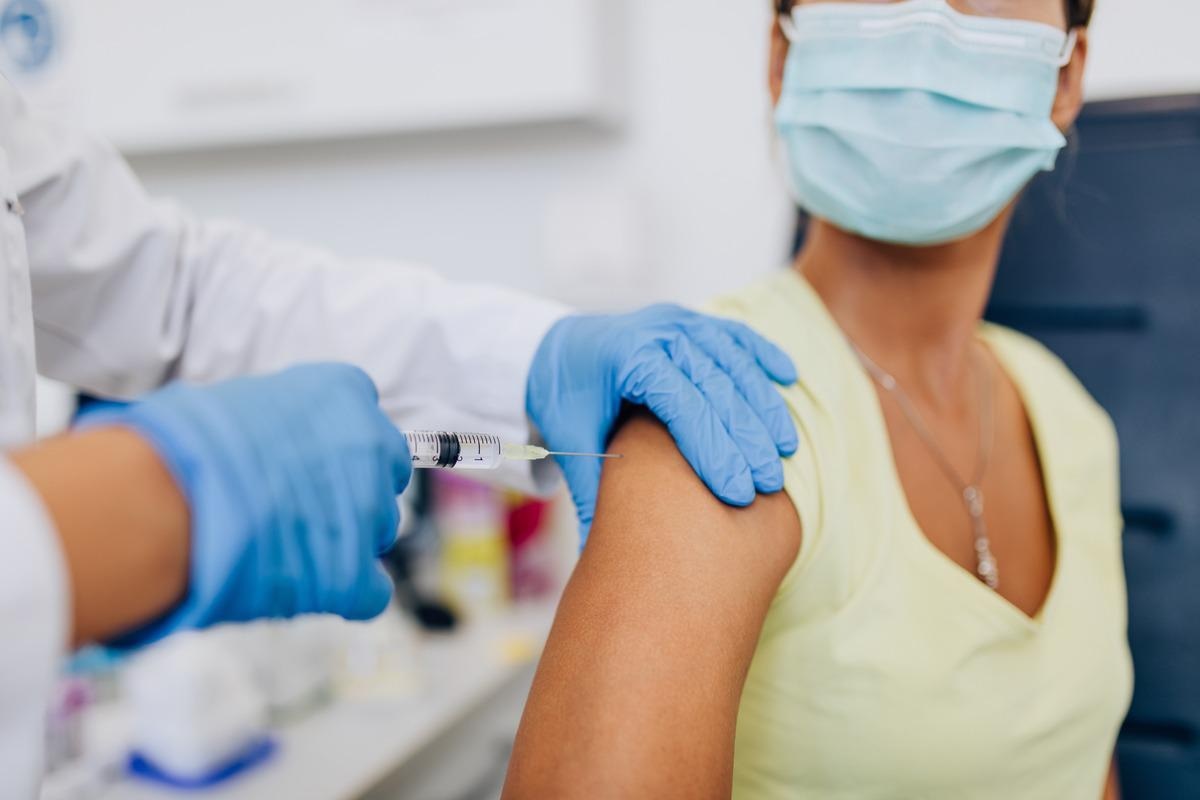In a recent study posted to the medRxiv* pre-print server, researchers compared the immune protection provided by naturally acquired coronavirus disease 2019 (COVID-19) and its vaccination in Qatar residents.

Several studies have suggested that the mechanism of action of immunity provoked by natural severe acute respiratory syndrome coronavirus 2 (SARS-CoV-2) infection and vaccination is different; likewise, is the extent and durability of this immunity. These differences possibly arise from varying mucosal immune responses, abundance, and nature of neutralizing antibody titers, or the causative SARS-CoV-2 variant.
About the study
In the current controlled trial, researchers used two matched cohorts that emulated a ‘target trial’ for a head-to-head comparison of protection conferred by the natural infection and the vaccination against breakthrough SARS-CoV-2 infections and associated hospitalization and death between February 28, 2020, and March 6, 2022, in Qatar.
The team sourced the data on COVID-19 vaccination, lab tests, hospitalization, and death from the national federated digital health information database that is a storehouse of all such data from the onset of the COVID-19 pandemic in Qatar.
They classified the study population into the natural infection and the vaccinated cohorts. The former comprised individuals with a documented primary (or first) infection between February 2020 and March 6, 2022 (end of the study period), and the vaccinated cohort comprised individuals who had received two doses of the BNT162b2 or messenger ribonucleic acid (mRNA)-1273 vaccines between January 2021 and March 6, 2022.
They matched the study population in the two cohorts 1:1 based iteratively on 10-year age group, gender, and nationality for adequately controlling differences in the risk of exposure to the infection. This population also broadly represented the total population of Qatar which is young and predominantly male.
The study's primary outcome was a documented case of SARS-CoV-2 infection, irrespective of the reason for testing or the disease symptoms. Notably, they based this documentation on the positive quantitative reverse transcription-polymerase chain reaction (RT-qPCR) or rapid-antigen tests (RAT).
They used standardized mean differences (SMDs) to compare eligible and matched cohorts, wherein an SMD of < 0.1 suggested appropriate cohort matching.
Further, they used the Cox regression model to compute the hazard ratio (HR), comparing the incidence of infection in both cohorts and the corresponding 95% confidence intervals (CIs).
Furthermore, they used the Kaplan–Meier estimator method to determine the cumulative incidence of infection in each cohort, a measure of the proportion of individuals at risk of reinfection.
Study findings
During the study period, 796,938 individuals had an RT-PCR-confirmed primary SARS-CoV-2 infection, of whom 515,705 individuals were unvaccinated.
Between January 2021 and March 6, 2022, 1,313,588 individuals received at least two BNT162b2 doses, and 894,553 individuals received at least two mRNA-1273 doses.
Natural infection was associated with a 50% lower incidence of SARS-CoV-2 infection and COVID-19 hospitalizations (already rare) than vaccination. Moreover, the primary infection-induced natural immunity did not wane for eight months.
The Omicron wave led to an unexpected surge in the incidence of reinfections in the natural infection cohort than the vaccinated cohorts. Yet, natural infection was associated with 50% and 40% lower incidence of SARS-CoV-2 infection than the BNT162b2- and mRNA-1273- vaccinated cohorts, respectively. The adjusted HR of 0.5 during the Omicron wave indicated 50% protection from natural infection against Omicron-induced reinfections.
Intriguingly, the differences in the protection conferred by natural infection and vaccination decreased to a minimum immediately after the second vaccine dose. The adjusted HRs was 0.80 with 95% CI, four months after vaccination with the mRNA-1273 vaccine, indicating no statistical difference in the protection provided by natural infection and the mRNA-1273 vaccine.
However, this difference began to surface in subsequent months; subsequently, incidence among those with natural infection was 65% lower than those vaccinated with mRNA-1273 vaccine eight months after the vaccination.
After 240 days post-follow-up, the estimated cumulative incidence of infection for the natural-infection cohort, the BNT162b2-vaccinated cohort, and the mRNA-1273-vaccinated cohort were 10.9%, 21.3%, and 18.4%, respectively. Likewise, the overall HRs for infection were estimated at 0.46 and 0.51 in the BNT162b2- and the mRNA-1273-vaccinated cohorts, respectively.
Conclusions
The study findings demonstrated that while natural infection provided stronger protection, vaccination prevented COVID-related hospitalization and death. It is important to prioritize vaccination as primary infection increases the risk of hospitalization and mortality; moreover, reinfections could result in long COVID-19.
The results also showed that the mRNA-1273 vaccine conferred slower but stronger protection than the BNT162b2 vaccine. Additionally, tthe protection provided by the BNT162b2 waned six months after the second dose.
Overall, the study findings confirmed that mRNA vaccines offered lower or negligible protection against Omicron, and their protection waned against pre-Omicron variants.
*Important notice
medRxiv publishes preliminary scientific reports that are not peer-reviewed and, therefore, should not be regarded as conclusive, guide clinical practice/health-related behavior, or treated as established information.
- Hiam Chemaitelly, et al. (2022). Protection of prior natural infection compared to mRNA vaccination against SARS-CoV-2 infection and severe COVID-19 in Qatar. medRxiv. doi: https://doi.org/10.1101/2022.03.17.22272529 https://www.medrxiv.org/content/10.1101/2022.03.17.22272529v1
Posted in: Medical Research News | Medical Condition News | Disease/Infection News
Tags: Antibody, Antigen, Coronavirus, Coronavirus Disease COVID-19, covid-19, immunity, Mortality, Omicron, Pandemic, Polymerase, Polymerase Chain Reaction, Respiratory, Ribonucleic Acid, RNA, SARS, SARS-CoV-2, Severe Acute Respiratory, Severe Acute Respiratory Syndrome, Syndrome, Transcription, Vaccine

Written by
Neha Mathur
Neha is a digital marketing professional based in Gurugram, India. She has a Master’s degree from the University of Rajasthan with a specialization in Biotechnology in 2008. She has experience in pre-clinical research as part of her research project in The Department of Toxicology at the prestigious Central Drug Research Institute (CDRI), Lucknow, India. She also holds a certification in C++ programming.
Source: Read Full Article
